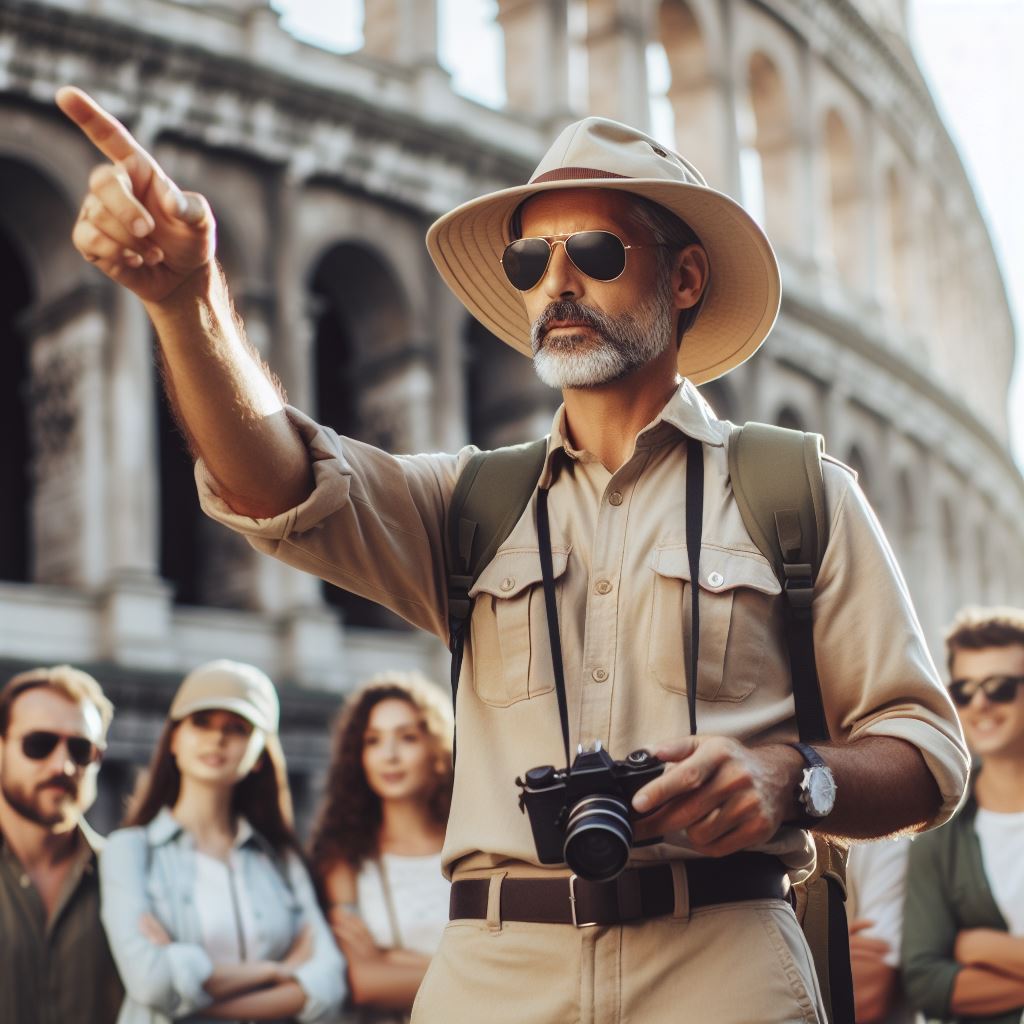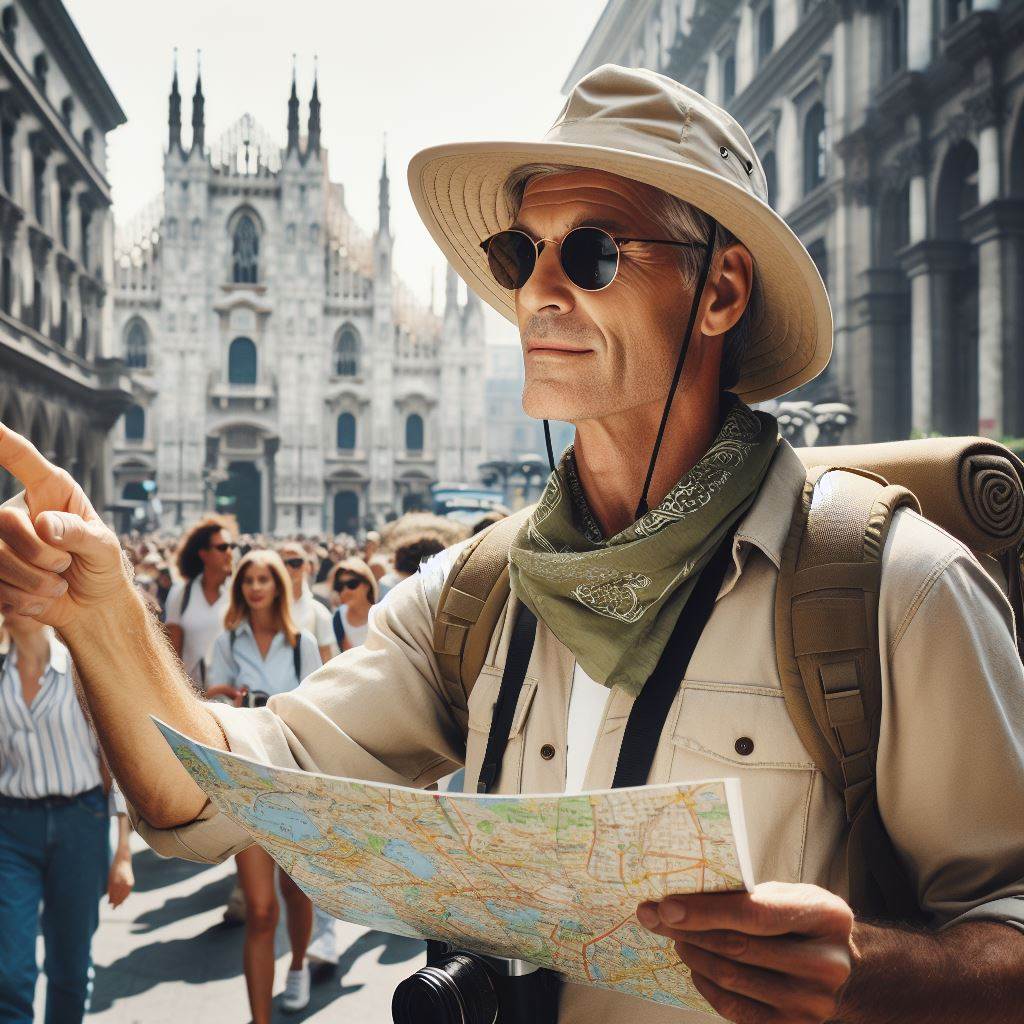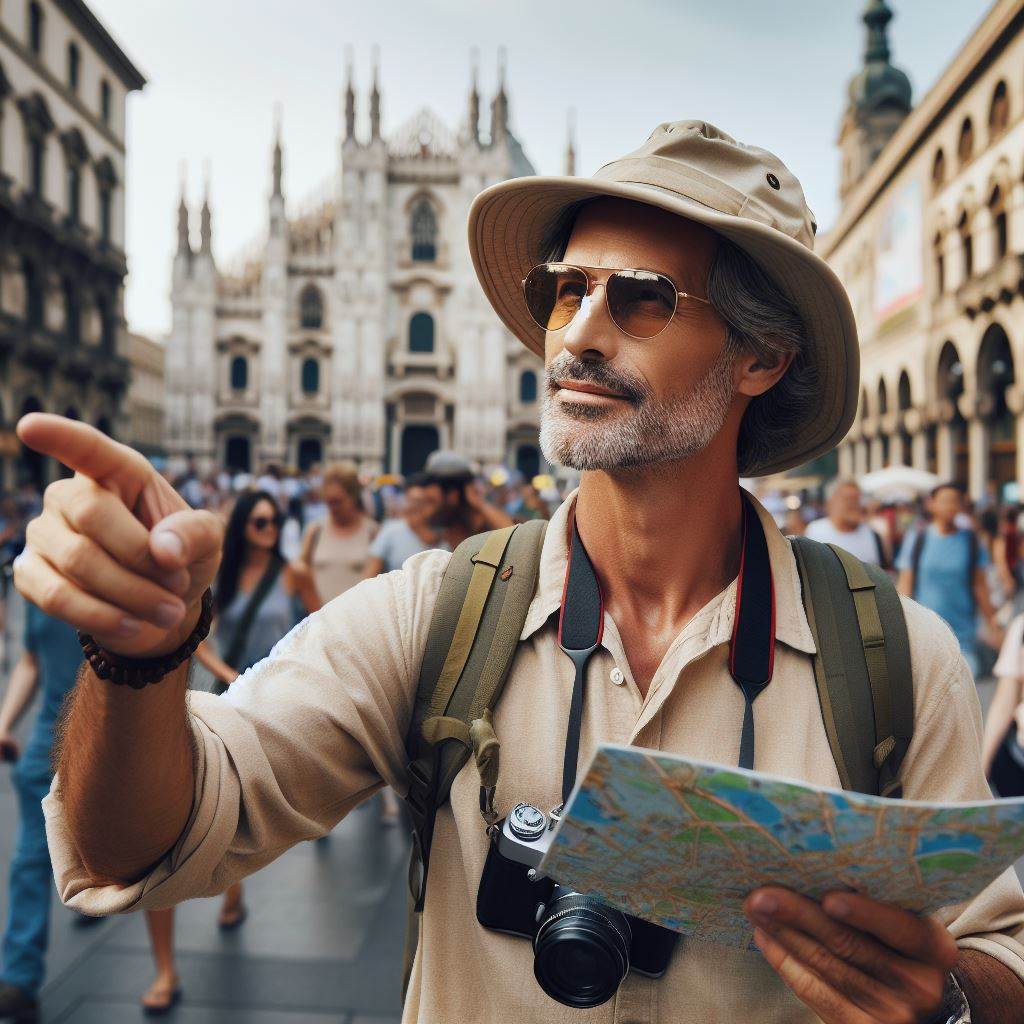Introduction
Being a tour guide in New Zealand is an exciting and rewarding job.
From showcasing stunning landscapes to sharing cultural experiences, tour guides play a significant role in making tourists’ visits memorable.
However, ensuring the health and safety of both the guides and the visitors is of utmost importance.
A safe and healthy working environment is essential for tour guides to perform their duties effectively.
They often encounter various risks while exploring New Zealand’s breathtaking natural wonders, such as rugged terrains and unpredictable weather conditions.
Therefore, understanding and implementing health and safety measures is crucial to minimize potential hazards.
This blog post aims to emphasize the significance of health and safety for NZ tour guides.
It will provide valuable insights into the practical aspects of maintaining a safe working environment throughout their operations.
By addressing potential risks and offering preventive measures, tour guides can ensure the well-being of everyone involved in their tours.
Topics covered in this blog post will include risk assessment techniques, emergency protocols in case of accidents or natural disasters, as well as guidelines for maintaining personal health and well-being.
Moreover, it will highlight the importance of proper training and ongoing education for tour guides to enhance their ability to handle unforeseen situations efficiently.
In essence, this blog post serves as a comprehensive guide for NZ tour guides, highlighting the importance of prioritizing health and safety in their daily operations.
By recognizing potential risks and implementing proactive measures, tour guides can ensure the well-being of themselves and their visitors throughout their journeys in New Zealand.
Understanding the Risks
Understanding the risks involved in tour guiding is the first step towards promoting health and safety.
Tour guides must continuously assess the potential hazards they may encounter during their trips and take appropriate precautions.
Personalized Career Consulting
Unlock your potential with expert career advice tailored to your goals. Get personalized guidance and actionable steps toward your dream career in New Zealand.
Get StartedCommon health and safety risks for tour guides in NZ
Keeping an eye on weather forecasts and adapting the itinerary accordingly can help mitigate physical hazards associated with changing weather conditions.
Tour guides should also carry essential safety equipment, such as first aid kits, communication devices, and appropriate attire for various terrains.
When it comes to environmental hazards, tour guides should educate themselves about native wildlife, their behavior, and potential risks they may pose.
It is crucial to communicate safety guidelines to tourists, ensuring they understand how to act responsibly and avoid unnecessary dangers.
Road safety should be a top priority for tour guides.
They should strictly adhere to speed limits, follow traffic rules, and avoid distractions while driving. Regular vehicle inspections and maintenance are vital to mitigate transportation risks.
Legal obligations and responsibilities for tour guides
Moreover, tour guides must be proactive in familiarizing themselves with relevant regulations and legislation.
Staying up to date with any changes or updates ensures compliance and helps maintain a safe environment for everyone involved.
Awareness of duty of care is essential for tour guides.
They should undergo training programs that educate them on their responsibilities towards tourists and fellow guides.
Clear communication, risk assessments, and emergency response planning are crucial for fulfilling the duty of care.
In fact, tour guides in New Zealand face various health and safety risks.
By understanding these risks and fulfilling their legal obligations, tour guides can ensure the well-being and enjoyment of both themselves and their tourists.
Read: New Zealand’s Tour Guide Training
Transform Your Career with a Professional CV and Cover Letter
Stand out to employers with an ATS-optimized resume and tailored cover letter designed to match your dream role. Let us craft your job application materials for success!
Get StartedPreparing for Health and Safety
As tour guides play a critical role in providing memorable experiences for tourists in New Zealand, it is crucial to prioritize their health and safety.
To achieve this, proper preparation is essential.
Developing a risk assessment and management plan
Developing a risk assessment and management plan is the first step.
By identifying potential hazards, such as rugged terrains or unpredictable weather conditions, tour guides can address risks proactively.
This involves assessing risks and likelihood, considering factors like the number of tourists, distance traveled, and activities involved.
Understanding the severity and frequency of potential accidents helps in formulating effective strategies.
Once risks are identified, implementing control measures becomes necessary.
This includes incorporating safety protocols, providing appropriate safety equipment, and educating both tour guides and tourists on potential hazards and necessary precautions.
By taking proactive measures, tour guides can create a safer environment for themselves and their clients.
Ensuring proper insurance coverage
Ensuring proper insurance coverage is equally important.
Tour guides must understand their personal and professional insurance needs.
Personal insurance should include coverage for accidents and illnesses that may occur during tours.
Professional insurance, such as liability insurance, protects against claims made by clients in case of any accidents or property damage.
When considering insurance coverage, tour guides should assess the types of coverage that best suit their needs.
Boost Your Career with a Standout LinkedIn Profile
Attract recruiters and expand your network with a fully optimized LinkedIn profile tailored to highlight your strengths and professional goals. Let your profile open doors to new opportunities!
Get OptimizedLiability insurance can protect against legal claims, while medical coverage ensures access to healthcare facilities in emergency situations.
It is crucial to select a comprehensive insurance plan that covers all potential risks and provides sufficient financial protection.
Locating reputable insurance providers is essential.
Tour guides can seek recommendations from colleagues in the industry or consult with insurance brokers specializing in travel-related coverage.
By carefully researching and comparing different insurance providers, tour guides can make informed decisions and select the most reliable option.
In summary, preparing for health and safety is a fundamental aspect of being a responsible tour guide.
Developing a risk assessment and management plan, including identifying potential hazards, assessing risks, and implementing control measures, ensures proactive safety measures.
Additionally, understanding personal and professional insurance needs and finding reputable insurance providers is crucial for securing comprehensive coverage.
By prioritizing health and safety, tour guides can deliver exceptional experiences to tourists while minimizing potential risks.
Read: Language Skills for NZ Tour Guides
Protective Equipment and Training
In order to ensure the health and safety of both tour guides and tourists in New Zealand, it is crucial to prioritize the use of personal protective equipment (PPE) and provide thorough training programs and certifications.
Importance of personal protective equipment (PPE)
When engaging in various tour guide activities, it is essential to have the appropriate gear to protect oneself from potential hazards.
PPE includes items such as helmets, protective eyewear, gloves, and safety boots. Each activity may require specific equipment to minimize the risk of injuries or accidents.
In addition to safeguarding tour guides, it is also important to provide PPE for tourists, if necessary.
Depending on the nature of the activities and the potential risks involved, visitors should be equipped with suitable protective gear to ensure their safety throughout the tour.
Training programs and certifications
Proper training is a fundamental aspect of ensuring the health and safety of tour guides.
Several essential training programs and certifications should be implemented to equip guides with the necessary skills to handle emergency situations and provide assistance when needed.
First aid and CPR training is paramount for tour guides as they may encounter medical emergencies during their tours.
Being equipped with these skills allows them to provide immediate assistance until professional help arrives, potentially saving lives.
Emergency response protocols should be established and included in the training programs.
Guides must be well-versed in identifying potential dangers, evacuating tourists in case of emergencies, and coordinating with relevant authorities in crisis situations.
Since New Zealand is known for its beautiful wilderness and outdoor attractions, tour guides should also acquire wilderness and outdoor survival skills.
This includes knowledge of navigation, shelter building, food foraging, and other essential skills needed in remote areas. Being prepared for unexpected situations enhances the safety of both guides and tourists.
In short, prioritizing personal protective equipment (PPE) and providing comprehensive training programs are crucial for the health and safety of New Zealand tour guides and tourists.
By equipping guides with essential gear and skills, they can confidently lead tours and handle emergencies, ensuring a positive and secure experience for everyone involved.
Read: Tour Guide Tech: Tools for NZ Pros

Risk Communication and Tourist Briefing
Communication plays a crucial role in ensuring the health and safety of tour guides and tourists alike.
As a tour guide, effectively communicating with tourists is essential to ensure they understand and follow safe behaviors throughout the journey.
Effective communication with tourists
1. Providing clear instructions for safe behaviors
It is vital to clearly communicate the expected safe behaviors to tourists.
This includes guidelines such as walking on designated paths or trails, keeping a safe distance from wildlife, and wearing appropriate safety gear.
2. Language barriers and cultural considerations
As New Zealand attracts tourists from various countries, tour guides must consider language barriers.
Providing translated materials or using simple language can help overcome these challenges.
Additionally, understanding different cultural norms and customs can aid in delivering instructions effectively.
Creating informative and engaging safety briefings
1. Explaining potential risks and precautions
During safety briefings, tour guides should explain potential risks associated with the tour, such as slippery terrains or extreme weather conditions.
They should also communicate the necessary precautions, including actions to take in case of an emergency.
2. Using visual aids and storytelling
To make safety briefings more engaging, tour guides can utilize visual aids such as maps, diagrams, or videos to demonstrate potential risks and safety measures.
Storytelling techniques can also be employed to share real-life examples that highlight the importance of following safety protocols.
3. Encouraging questions and feedback
Tour guides should actively encourage tourists to ask questions and provide feedback during safety briefings.
This creates a two-way communication channel, allowing tourists to clarify doubts and express concerns.
Addressing these queries and concerns promptly helps ensure a safer and more enjoyable experience for everyone.
Effective risk communication and engaging safety briefings can significantly contribute to the overall health and safety of both tour guides and tourists.
By providing clear instructions, considering language and cultural differences, explaining potential risks, using visual aids, and encouraging questions, tour guides can minimize potential hazards and maintain a safe touring environment.
In general, effective communication is essential for tour guides when it comes to Health & Safety for NZ Tour Guides.
By focusing on clear instructions, overcoming language barriers, creating engaging safety briefings, and encouraging open dialogue, tour guides can enhance the safety and well-being of tourists, ensuring a memorable experience for all.
Read: Navigating Legalities in NZ Touring
Maintaining Health and Wellness
In a demanding profession like tour guiding, taking care of one’s health and wellness is of utmost importance.
Tour guides are responsible for the safety and satisfaction of their clients, requiring them to be physically fit and mentally sharp.
This section focuses on strategies to maintain health and wellness while performing tour guide duties.
Staying physically fit and mentally healthy
1. Importance of regular exercise and nutrition
Tour guides need to prioritize regular exercise and nutrition to ensure their bodies are fit to handle the physical demands of the job.
Engaging in physical activities such as cardio exercises or strength training not only helps in staying fit but also benefits mental health.
Exercise stimulates the release of endorphins, which can alleviate stress and boost mood.
Additionally, consuming a balanced diet with essential nutrients provides tour guides with the energy they need throughout the day.
2. Managing stress and burnout
Tour guiding can be a high-stress job, with long hours, tight schedules, and constant interaction with diverse groups of people.
This can lead to burnout if not managed properly. It is crucial for tour guides to find ways to manage stress and prioritize self-care.
Engaging in activities like yoga, meditation, or hobbies can help in reducing stress levels and promoting mental well-being.
Taking regular breaks, practicing effective time management, and seeking support from colleagues can also prevent burnout.
Identifying and addressing common health issues
1. Sun safety and skin protection
Tour guides often work outdoors for extended periods, exposing them to the sun’s harmful UV rays.
Protecting the skin from sunburn and reducing the risk of skin cancer is vital.
Tour guides should use sunscreen with a high SPF, wear protective clothing, such as wide-brimmed hats and long sleeves, and seek shade whenever possible.
Regular skin checks and consultations with dermatologists are also recommended to detect and address any skin concerns.
2. Hydration and nutrition during outdoor tours
Outdoor tours can be physically demanding, especially in hot weather conditions.
Proper hydration is crucial to prevent dehydration and maintain optimum performance.
Tour guides should carry an adequate supply of water and encourage tourists to drink enough water throughout the tour.
Additionally, having access to healthy snacks, such as fruits and nuts, can provide tour guides with essential nutrients and sustained energy levels during long tours.
In review, maintaining health and wellness is vital for tour guides to perform their duties effectively.
Staying physically fit through regular exercise and proper nutrition, managing stress levels, and addressing common health issues like sun safety and hydration are crucial aspects to prioritize.
By taking care of their health, tour guides can ensure a safe and enjoyable experience for themselves and their clients.
Emergency Preparedness and Response
When it comes to the safety and well-being of both tour guides and tourists, emergency preparedness and response should be a top priority.
By developing an emergency action plan and knowing how to handle emergencies on tours, tour guides can ensure the best possible outcomes in critical situations.
Developing an emergency action plan
1. Establishing communication channels
One vital aspect of emergency preparedness is establishing effective communication channels.
This includes having proper communication devices and protocols in place to ensure clear communication between all parties involved.
It is essential to have a reliable method of communication that can be easily accessed and used during emergencies.
2. Designating roles and responsibilities
In order to effectively respond to emergencies, it is crucial to assign specific roles and responsibilities to each member of the tour guide team.
Clear instructions should be provided to ensure everyone knows their duties and what actions they need to take in different emergency scenarios.
This helps maintain a coordinated and efficient response during critical situations.
3. Coordinating with local emergency services
Tour guides should establish effective coordination with local emergency services, such as ambulance services, police, and fire departments.
This collaboration ensures that emergency services are familiar with the tour routes and can provide timely assistance if needed.
It is important to establish a relationship with these services and include them in the emergency action plan.
Handling emergencies on tours
1. Responding to accidents and injuries
In the event of accidents or injuries, tour guides should have proper training in first aid and be equipped with necessary medical supplies.
Immediate medical assistance should be provided, and emergency services should be contacted.
Tour guides should remain calm and reassure the tourists while waiting for professional help.
2. Dealing with natural disasters or adverse weather conditions
Natural disasters and adverse weather conditions can occur unexpectedly.
Tour guides should have contingency plans in place to handle such situations.
This may include having alternative routes, identifying safe shelters, or rescheduling the tour if necessary.
Regular monitoring of weather updates and maintaining open communication with local authorities can aid in making informed decisions.
By proactively developing an emergency action plan and being prepared to handle emergencies on tours, tour guides can significantly enhance the safety and well-being of both themselves and the tourists they guide.
It is essential to regularly review and update the emergency action plan, ensuring that all team members are aware of their roles and responsibilities.
Prioritizing emergency preparedness allows tour guides to provide a secure and enjoyable experience for everyone involved.
Conclusion
Recap of Key Points Discussed
Throughout this post, we’ve emphasized the paramount importance of maintaining health and safety standards as a tour guide in New Zealand. To summarize:
- Vigilance: Always remain alert and aware of your surroundings. Recognize potential hazards and take proactive measures to mitigate risks.
- Knowledge: Familiarize yourself with emergency procedures, including first aid protocols and evacuation plans. Preparedness can make all the difference in critical situations.
- Communication: Effective communication with both tourists and fellow guides is essential.
Clear instructions and information dissemination can prevent misunderstandings and ensure everyone’s safety.
Importance of Prioritizing Health and Safety as a Tour Guide in NZ
Tour guides serve as ambassadors for New Zealand’s tourism industry, entrusted with the well-being of visitors.
Prioritizing health and safety not only safeguards individuals but also upholds the reputation of the destination.
By adhering to rigorous standards, guides demonstrate professionalism and dedication to providing exceptional experiences.
Encouragement to Implement the Suggested Practices and Seek Continuous Improvement
I encourage all tour guides to embrace the practices outlined in this post actively.
Implementing these strategies fosters a culture of safety that benefits everyone involved.
Moreover, don’t view safety measures as static; instead, strive for continuous improvement.
Regular training, feedback mechanisms, and staying updated on industry best practices are essential for enhancing safety standards.
Remember, your commitment to health and safety not only protects tourists but also contributes to the overall sustainability of New Zealand’s tourism sector.
By prioritizing safety, you ensure that every visitor’s experience is not only enjoyable but also secure.
Thank you for your dedication to excellence in guiding, and may your efforts continue to enrich the experiences of travelers while safeguarding their well-being.




